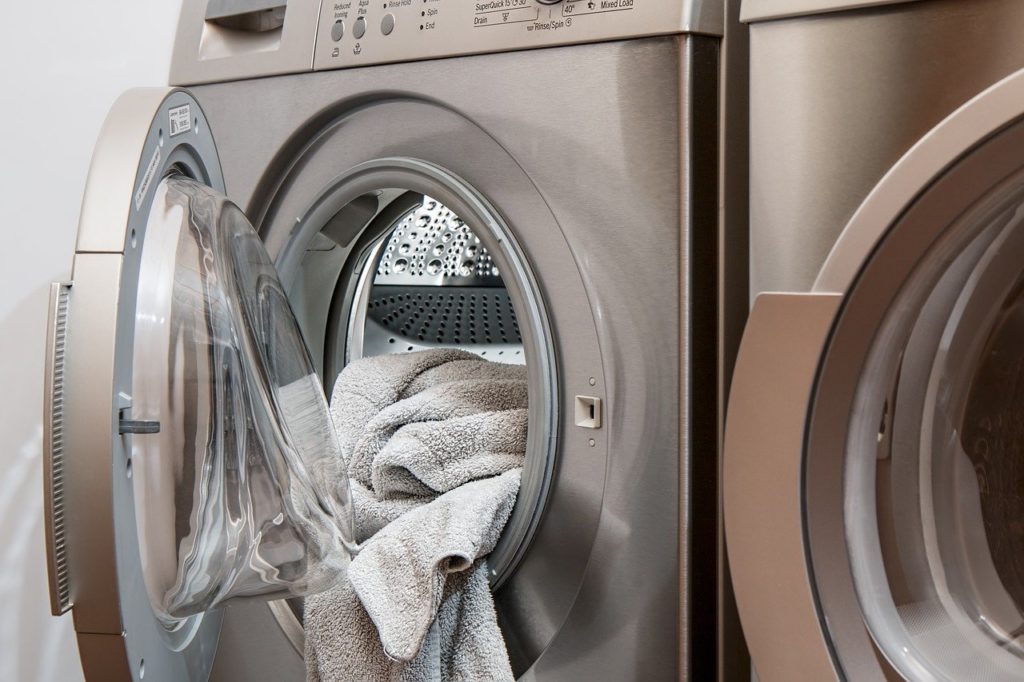Dryers are a household necessity these days, but they do not always work. Even Samsung dryers can experience issues despite their reputable brand. One of the most common problems a Samsung dryer may develop is not heating. Why does this happen?
Usually, a Samsung dryer stops heating because it has overheated due to a faulty part. A clogged air vent line or bad fuse is generally to blame. If cleaning the vent lines does not fix the issue, the bad part can then be identified and replaced. You may need a multimeter to test some of these parts.
Keep reading to learn more about the common causes of a gas or electric Samsung dryer that stops heating, as well as how to fix the problem.
Common Sources and Solutions
While there are many components that may stop your Samsung dryer from heating, the first two covered here are the most common. You will most likely identify your problem and solution as one of the following:
Air Vent Line
All Samsung dryers have air vents that direct the hot air to your damp clothes. A clogged vent line or lint filter is the most common reason for these dryers to stop heating. They will run and may even have weak heat, but it is not enough. These parts will need to be cleaned.
The Solution:
- The air vent is the tube that runs from the back of the dryer to the wall. Unplug the dryer. Turn the supply valve off if it is a gas dryer.
- Detach the air vent from the wall and pick the lint out of the tube. Be sure to wear gloves.
- After getting most of the lint and debris by hand, use a vacuum hose to get the rest.
- To clean the lint filter, catch the lint in a dryer sheet, and dispose of the sheet.
Thermal Cut-Off Fuse
Both electric and gas Samsung dryers have these fuses. If these fuses receive too much power, one of them might blow out. If a thermal cut-off fuse blows out, the dryer will not run at all. Samsung thermal fuses cannot be reset. A blown fuse will have to be replaced.
The Solution:
- Unplug your dryer and check the fuses to see if one of them is blown. The fuses are typically located in the heating element area.
- To test the fuses, remove them from the metal connectors (do not touch the wires).
- Touch each end of the fuses to the probes of a multimeter. If a reading near zero comes up, the fuse is in fine condition. Readings near 120 indicate that a fuse is faulty and is the one that must be replaced.
Voltage
In some cases, a Samsung dryer may not be receiving enough power. An electric dryer, for instance, usually requires at least 240 volts. If only one breaker or fuse trips, the dryer may run but not have enough electricity to produce heat.
The Solution:
- First, check to see if the dryer is plugged in. While this may sound like a no-brainer, this tip has saved several people hundreds of dollars on a repairman visit.
- If the dryer not being plugged in is not the issue, check the circuit breaker or fuse box to see if one of them is not tripping.
- Lastly, the outlet may not be outputting enough electricity. The multimeter can be used to check this.
Gas Valve Coils
Gas Samsung dryers have at least two gas valve coils called solenoids. These allow the valve ports to open so gas can reach the burners. If the solenoids fail, the dryer will not heat.
The Solution:
- Check the igniter. Unplug the dryer and shut off the gas first. Getting to this part requires removing the front and top panel of the dryer, as well as the drum.
- If the igniter glows but no gas is ignited, one or more of the solenoids has failed. These work best as a set, so most experts recommend replacing every coil.
Igniter
Sometimes, the igniter itself may become faulty in a gas dryer. As with bad gas valve coils, gas cannot reach the burners when this part stops working, and the dryer cannot heat up.
The Solution:
- As usual, turn off the power and the gas before you do anything else. Use a multimeter to test the igniter. Be sure to set the meter’s needle to O.
- Again, a reading that is close to zero means that the part should be working fine, but a reading near 120 shows that the part will need to be replaced.
Flame Sensor
Flame sensors detect whether or not heat is being generated in a gas dryer. If this sensor stops working, the dryer will not realize that it should be heating. A faulty flame sensor is less likely to be the cause than a failed solenoid or igniter, so those should be tested first.
The Solution:
- Testing the flame sensor also requires a multimeter. Remember to shut off the gas and unplug the dryer. The flame sensor is usually in the burner assembly.
- To get to the burner assembly, the panels and drum must be removed, which is another reason to test the sensor after the coils and the igniter if those are not the problem.
- The same readings apply to the multimeter.
Thermostats
Sometimes, high-limit or cycling thermostats may stop working. A high-limit thermostat turns off the heat in a dryer whenever it is at risk of overheating. The cycling thermostat turns the heat on and off to keep the temperature even. Dryers will not heat if these stop working.
The Solution:
- Shut off the dryer. The thermostats are both located in the heating element compartment, which will have to be removed. The top and front panel must be removed first to access this area.
- Never disconnect the wire harness from either thermostat, as these dryers are not designed to do that, and it could be dangerous.
- Use a multimeter to test both thermostats. If either has a reading near 120, be sure to replace that part.
Heating Element
The heating element makes the air warm before it reaches the drum of the dryer. These can become burnt out over time, which is less likely to happen if you keep the air vent clean. The dryer may still run, but the air cannot heat up if this is the issue.
The Solution:
- Turn the dryer off. As with the thermostats, the heating element compartment will need to be removed. Disconnect the wires from the element, but not the thermostats.
- Use a multimeter to test the heating element and determine if it needs to be replaced.
Important Information to Remember
Before you decide to completely scrap your Samsung dryer or call a repairman, there are several parts that might be responsible for a lack of heat. The easiest and most common solution is to clean out the air vent or replace a thermal fuse. You can do this yourself and save a few hundred dollars.
Always remember to unplug your dryer and turn off the gas before removing any of its parts. You will need a multimeter to test some of these parts if the air vent is not the issue.

Hi there, technology lovers! My name is James, I am an admin and a frequent writer for this blog. I am a techno-geek, so this blog is the place where I want to share all my knowledge with you to make your life a little bit easier in terms of dealing with technology.



